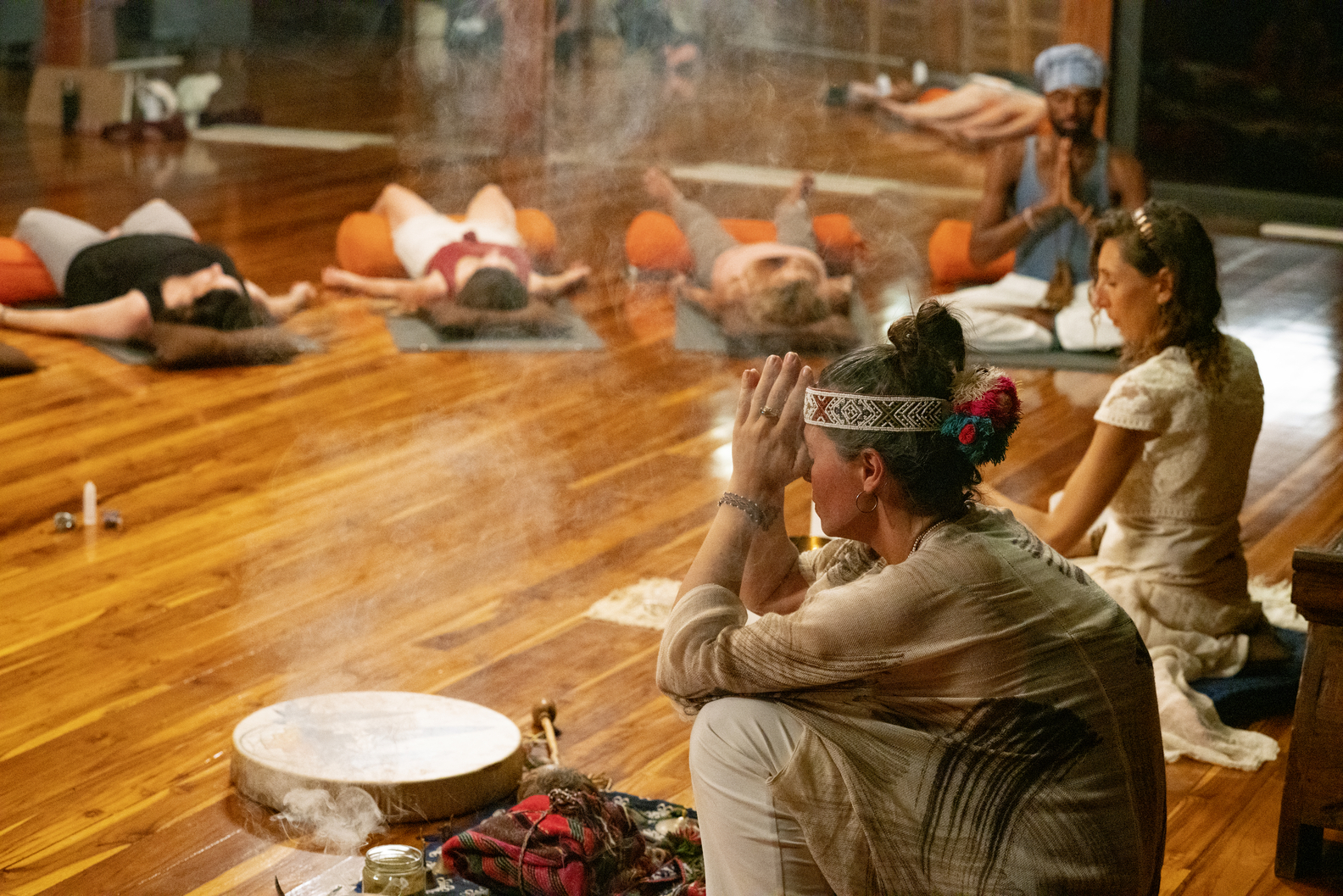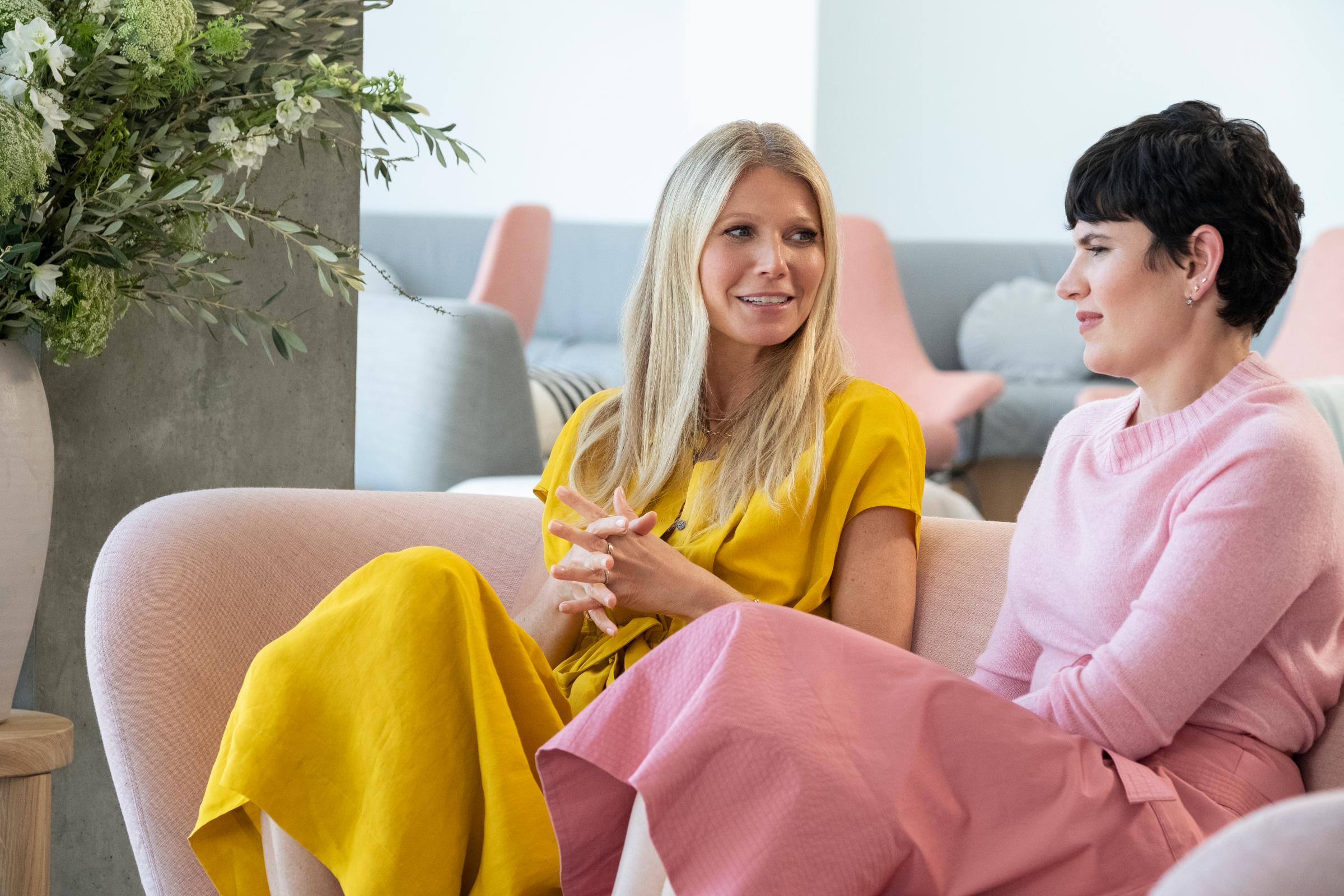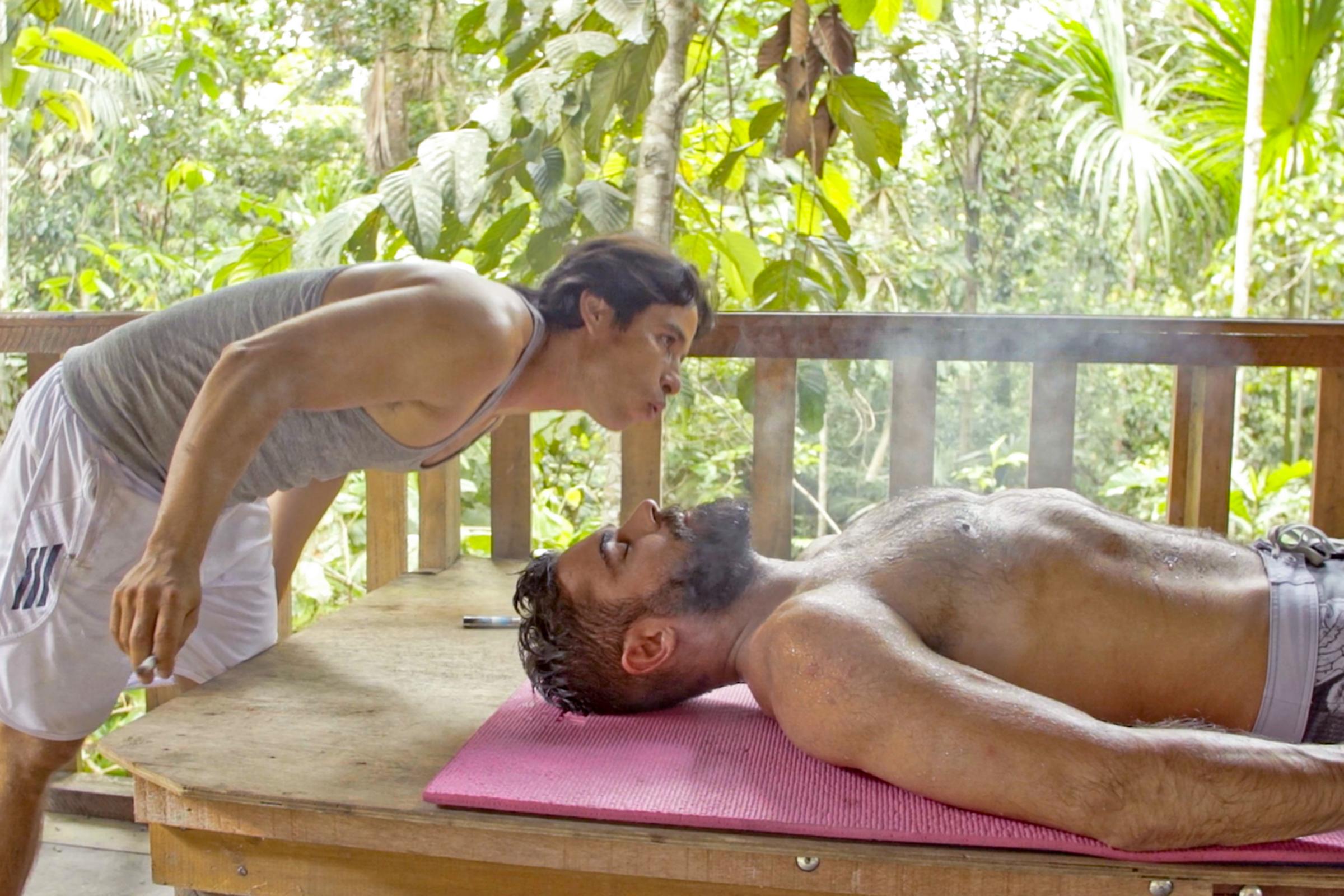
If you’ve watched any amount of reality TV, you’ve witnessed a scene like the one that closes the series premiere of TBS’s Lost Resort: a beautiful 20-something woman, surrounded by scenery straight out of the Garden of Eden, screams her heart out. Her attractive castmates look on helplessly, wearing skimpy athleisure and expressions of performative concern or vicarious embarrassment. The person who, at least as far as viewers can tell, caused this outburst hides her head in shame.
On Love Island or The Bachelor, this kind of meltdown would probably have something to do with competition for a mate. Such incidents are inevitable on roommate shows like The Real World, where pugnacious young adults are constantly drunk and in each other’s faces. Survivor, The Amazing Race and their ilk force exhausted contestants to work together in hopes of completing challenges designed to incite conflict. But on Lost Resort, the crying and moaning are the challenge. Debuting July 23, the series bills itself as a “social experiment” that transports nine participants to a resort in the Costa Rican jungle on a “journey of self-discovery” in the care of “an eclectic team of alternative healers.” The screamer is 26-year-old Christine, and the woman averting her eyes is Christine’s mom Robin. We are observing something called a “rage ritual”—and, in a broader sense, one of the sillier manifestations of a new trend in reality TV: the wellness show.
Wellness is, of course, a massive cultural force unto itself. Too tenacious to be classified as a trend, it’s more like a new lifestyle paradigm for a certain subset of generally youngish, relatively affluent Westerners willing to pay a premium for high-end products, treatments and experiences—all in the pursuit of practices, from yoga to ayahuasca shamanism, that mostly originated in the Global South. The Global Wellness Institute, a nonprofit umbrella organization for what has become a $4.5 trillion industry, defines wellness as “the active pursuit of activities, choices and lifestyles that lead to a state of holistic health.” This purposeful way of existing in the world incorporates physical, mental, emotional, spiritual, social and environmental components.
Gwyneth Paltrow, whose Goop empire sits at the perilous crossroads of media and ecommerce, is perhaps the most famous face of contemporary wellness culture. In January, she unveiled Netflix’s The Goop Lab With Gwyneth Paltrow, a docuseries in which Paltrow and her staff test out a suite of buzzy practices. Also on Netflix, Down to Earth With Zac Efron sends the actor around the world with entrepreneur Darin Olien, whom Efron describes as a “guru of healthy living and superfoods,” on a bro trip focused on wellness, food and conservation. And YouTube Original Sleeping With Friends is a game show that pits YouTube personalities against one another in a quest to improve their sleep hygiene. HBO Max recently announced that it was partnering with the popular app Calm on A World of Calm, a series that will enlist beloved performers like Mahershala Ali, Nicole Kidman and Keanu Reeves to narrate episodes that will consist of guided relaxation sessions.
As different as they are from each other, all wellness shows share at least one central enticement: the possibility of transformation—for subjects onscreen, the viewer at home or both. This is hardly a new theme. Ovid’s Metamorphoses is written into the DNA of Western storytelling, from the “sea change” of Shakespeare’s The Tempest to My Fair Lady. Just as it was in that musical, not to mention so many teen movies of the 1980s and ’90s (The Breakfast Club, She’s All That, Jawbreaker), physical transformation was a favorite trope of reality series in the ’00s. But since then, an increased awareness of the dark side of reality TV, a surge in pop feminism and various other, more subtle shifts in the public mood have put an end to most makeover shows. The new wave of wellness shows isn’t just tapping into a novel market, then. It’s also satisfying our hunger for transformation stories. But is the spectacle of rage rituals and Gwyneth cleanses really nourishing viewers’ bodies or souls more than what came before it?

Reality TV was a Wild West in the early 21st century. And horrific concepts vastly outnumbered brilliant ones. ABC’s Extreme Makeover spent four seasons, beginning in 2002, combining the acute pain of cosmetic surgery with the prolonged agony of brutal diets and exercise regimens in an effort to transform regular people into supermodels. With 2004’s short-lived The Swan, Fox upped the ante by restricting its “ugly duckling” cast to women and pitting the gut-renovated subjects against each other in a beauty pageant. In her book Reality TV Bites Back, media critic Jennifer L. Pozner called it “the most sadistic reality series of the decade,” pointing to the bogus credentials of some so-called experts whom producers allowed to verbally abuse contestants.
Gentler, less extreme makeover reality shows took longer to wear out their welcome. TLC’s adaptation of the British show What Not to Wear, in which hosts Stacy London and Clinton Kelly cheerfully upgraded the wardrobes of the sartorially clueless, ran for a decade before wrapping up in 2013. Cosmetic intervention was limited to a haircut and some new makeup. But the show still fed on the mostly female participants’ physical insecurities, gawked at them amid apparent emotional breakdowns and implied that any woman who failed to conform to external standards of beauty or taste must hate herself. London revamped her approach for 2015’s Love, Lust or Run, vowing to honor each makeover subject’s individuality. “I’m not out to change them,” she told HuffPost. “I don’t want them to blend in, they aren’t necessarily meant to look conventional.”
Network executives also found new ways to cash in on Americans’ obsession with weight loss. NBC’s long-running hit The Biggest Loser, which launched the same year as The Swan, tantalized viewers with the opportunity to watch obese people dramatically transform their bodies through an all-consuming program of calorie restrictions and hours of daily exercise. Under the supervision of personal trainers, many contestants would lose upwards of 100 and sometimes even 200 pounds in just a few months. Televised hospitalizations, horror stories from cast members and a chorus of criticism from physicians and nutritionists made a strong case that the show was more interested in exploiting its cast members than it was in helping them. Loser quietly went off the air in 2016, after a widely publicized study found that contestants were gaining back pounds because rapid weight loss had slowed their metabolisms.
Like every other show that ever built up a following, the show has resurfaced amid a TV landscape that’s ravenous for content but starved for fresh ideas, with an 18th season that aired this winter on the NBCUniversal-owned USA Network. This contrite Loser promised to focus on sustainable lifestyle changes, incorporating group therapy and nutrition. Though critics didn’t necessarily agree that this particular makeover was extreme enough to redeem the show, USA and SyFy Networks head Chris McCumber touted the revised approach as a “holistic, 360-degree look at wellness.”

The wellness show is, on its scrupulously moisturized face, more humane than the makeover show. It often involves celebrities who would never endanger their reputations by stepping on a scale or airing out their homeliest undergarments on prime-time TV, because wellness culture is a magnet for people whose livelihoods depend on staying youthful and attractive for as long as possible. The stated aim of these shows is to help people, not humiliate them. On Lost Resort, we see the healers fiercely debate the ethics of subjecting the cast to out-there practices such as orgasmic healing. Watching this stuff is supposed to feel good, not dirty.
Unfortunately, the effectiveness—and even the safety—of many disciplines that fall under the enormous umbrella of wellness varies widely. The sheer expansiveness of the category—and its status as a global business juggernaut—can be worrisome. Wellness culture includes such research-backed practices as exercise, meditation and plant-based diets; it also encompasses alternative therapies like crystal healing, whose utility seems limited to the placebo effect. At its fringes are harmful, demonstrably false beliefs like those promoted by the anti-vaccine movement. But even more legitimate corners of the wellness world can be cultish, hyper-commercialized, emptily aspirational. In an op-ed for the New York Times, novelist Jessica Knoll writes that she came away from her experiences with the culture convinced it was “a dangerous con that seduces smart women with pseudoscientific claims of increasing energy, reducing inflammation, lowering the risk of cancer and healing skin, gut and fertility problems.” She insists that “at its core, ‘wellness’ is about weight loss.” In 2018, Weight Watchers cemented the impression that “wellness” is a euphemism for “weight loss” by shortening its name to WW and adopting the slogan “wellness that works.”
Wellness shows reflect that range. Sleeping With Friends is pretty careful, offering time-tested wisdom on the value of journaling to shake off the anxieties of the day and avoiding screens before bed. Series like Goop Lab and Down to Earth can be much flakier. Efron’s alternately goofy and philosophical narration creates the impression that he’s just as sanguine about the under-researched technique known as “grounding” or the possibility that water from Lourdes’ famous spring can cure cancer as he is about the promise of geothermal energy. In Topic series The Guru Inside You, which parodies wellness culture, false prophet Sre Kumaré (creator Vikram Gandhi) praises Paltrow thusly: “Her incredible success is in being able to convert the body-shaming of the beauty industry into the aura shaming of the wellness industry.” Indeed, the face of Goop has come under fire for selling women expensive products that could actually hurt them. (In 2019, a woman sustained second-degree burns from vaginal steaming, a treatment Goop had endorsed.) And her show fails to meaningfully distinguish between research-supported episodes and wide-eyed explorations of plainly ridiculous topics like psychic mediumship.
Lost Resort, for its part, blurs the lines between nonjudgmental therapy and mean-spirited entertainment. The show professes to care about its participants; some of its stories, like the plight of a woman who can’t stop mourning her stillborn baby, do evoke genuine empathy. Yet Christine’s self-centered mother Robin is edited to fit the contours of a classic reality TV villain. It’s even hard to know how seriously we’re supposed to take these alternative healers. Oneika, a New Yorker who teaches meditation to incarcerated people, seems pretty legit. But the retreat’s leader is a woman named Chrissie Fire Mane who boasts expertise in “shamanic psychotherapy” and a fondness for finger cymbals. Another healer, Benjamin, doesn’t exactly refute the viewer’s suspicion that many people on this show were cast for their appearance. “Your body is your temple,” he opines. “I was blessed to have a temple that’s 6-foot-4 and has nice hair and develops muscles well when I put the practice in.” Climactic set pieces like the rage ritual struck me as manufactured drama more than as effective methods of treating cast members whose issues ranged from anger management to detachment from emotions.
Wellness and the culture that surrounds it are complicated topics. Genteel framing aside, the shoddy or confusing science that underlies so many wellness shows could be more dangerous than the exploitative transformation porn of makeover and weight-loss programs. Their aspirational nature also seems likely to foster dissatisfaction among viewers who don’t have time to cook superfood feasts or can’t afford yoga retreats. Reality TV might sometimes manage to educate us or inspire empathy, but its chief function will always be to entertain. Anyone who says differently probably has some snake oil to sell you.
More Must-Reads From TIME
- The 100 Most Influential People of 2024
- The Revolution of Yulia Navalnaya
- 6 Compliments That Land Every Time
- What's the Deal With the Bitcoin Halving?
- If You're Dating Right Now , You're Brave: Column
- The AI That Could Heal a Divided Internet
- Fallout Is a Brilliant Model for the Future of Video Game Adaptations
- Want Weekly Recs on What to Watch, Read, and More? Sign Up for Worth Your Time
Contact us at letters@time.com